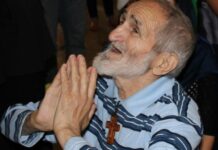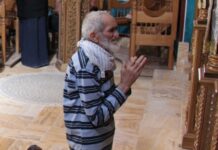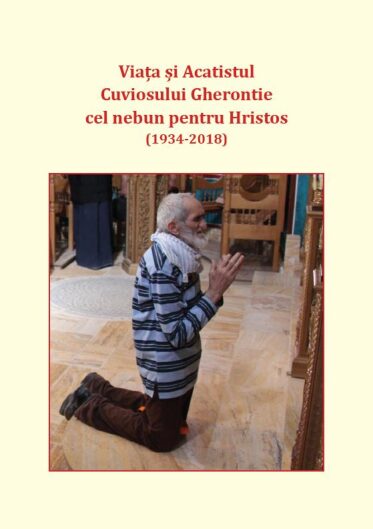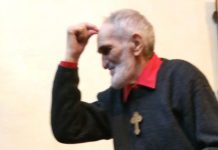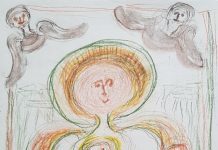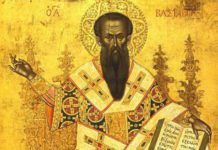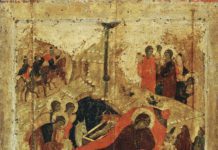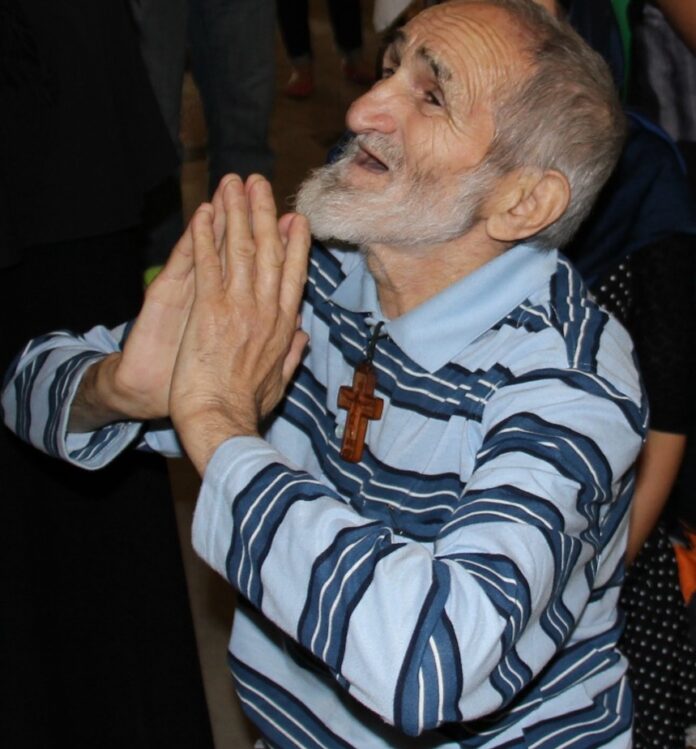Blessed Gerontios, the Fool for Christ, was born on November 4th 1934 in village Viscri, not far from Rupea town, now in Brasov county, Romania. For his christening he received the Great Martyr and Triumphant George as his patron Saint, to whom he remained devoted throughout his entire life. He was the second son of John and Helen Aldea’s three children, who earned their living by farming the land.
Ever since childhood he led an intense religious life marked by introspection, fasting and prayer, his mother serving as his first model of piety, whom he greatly cherished throughout his life. From a young age his religious preoccupations were seen as excessive and often times misunderstood, even by his own family. In elementary school he was often found praying, for which his teacher scolded and even punished him. His unique behaviour, his lack of reaction to the brutality of those around him became, over the years, pretext for his school colleagues and other children from his village to mock and humiliate him in countless ways.
Testimonies of those who knew him during his teenagehood narrate of intense spiritual toils, prolonged prayers, and austere fasting, sometimes for days in a row, even during times when he helped his family on the farm. His religious life was already resembling that of hermits, even while living as layman. People around him began to notice the power of his prayers, in different situations. It was during these years that he started to visit his father’s brother, Igumen Modestus Aldea, abbot of Ciolanu Monastery and ecclesiarch of Buzau Cathedral, more often. Blessed Gerontios became a disciple to his uncle, learning from the Igumen many of the monastic mysteries. As a fervent devotee to the monastic life, in the autumn of 1959 Blessed Gerontios refused to abandon Ciolanu Monastery, as the communist ruling in Romania demanded young monks to do.
This marked the beginning of his great suffering for the faith. For a while he was jailed at Jilava Prison, where he continued his ascetic toils, despite the intense pressure put on him to renounce the monastic life.
After a number of days in the prison black hole, in conditions of near extermination, when his strength reached a breaking point, the Most Holy Theotokos showed Herself to him, instructing him to pick up the fool-for-Christ cross, promising him that she will help him carry it.
It wasn’t long before the authorities concluded that the torture endured by the Blessed in prison drove him irreversibly mad, reason for which they decided to transfer him to a psychiatric ward, from where he was later set free.
Subsequently Blessed Gerontios cloaked his entire personal ascetic toil under the Fool-for-Christ garment. His days spent in monasteries were alternated with visits to certain families who welcomed him for different periods of time. Everywhere he went he urged others to uplift their spiritual life towards prayer and ascetism, encouragements, firstly, backed by his own personal example, as well as by his, often times, uncommon, short, words of wisdom. He prayed, kneeling, for hours on end, frequently spent his nights in vigil, while his lent was strict and ascetic, with many days of total fasting. He spoke of heaven and eternal blessings, recounting the few times he saw the Mother of God or of when the evil one tried to scare him, to hinder him from his spiritual ascent.
Because he was socially outcast by the authorities who had imprisoned him, after submitting him to continuous scrutiny they admitted him into psychiatric wards several more times. He only agreed to discuss about the persecutions he endured to have a chance to give grace to God for keeping him alive and sane, despite the treatments that were forced on him. Another crucial moment in his life was when he shouted to the Romanian communist leader from before 1989 that if he will not believe in God the people around him will shoot him. A new ordeal followed, from which, he was saved by the Most Holy Theotokos.
After 1990 he continued his spiritual toils, his journey towards the confession or strengthening of the faith, and following his prolonged ascetic toils, the healing of many people with great afflictions, often times with serious illnesses. He was also very compassionate toward the poor he met and to whom, if he had no money, would offer his own coat. He was well aware that his monastic belts and other pieces of garments he wore, which he always generously gave away, were bearers of godly grace and, more than once, when worn by the sick they were healed of various illnesses.
To carry forth his work, to avoid being glorified by the people who saw miracles worked through him, or the timely help received from God, in great trials, by the intercession of his prayers, he humbled himself with unique fool-for-Christ behaviour: public self-reproach, apparent uttering of gibberish, wearing ragged clothes, apparent alcohol addiction, and uncommon behaviour during church divine services. In his spiritual journey he sought out Romanian father confessors, for whom he had great piety and with whom he was in a lifelong faith and prayer communion.
The work and presence of the Holy Spirit in Blessed Gerontio’s life could always be felt. He was commonly seen as a great ascetic, able to bow in full prostrations, kneeling in prayer for hours on end (in church also), with his arms raised towards God or holy icons, until the end of his days.
The means through which he shared the godly grace he was given, following his many toils, were and still are, his “paintings”, depicting, as main theme, the Church of the Heavenly Jerusalem, but also the audio recordings of his “holy chants”, recorded throughout the years. They all prove him to have been a man who lived in the “Light which will not be overcome”, interceder and pillar on the path of redemption, for thousands and thousands of souls.
Asides from his personal toils, he always sought love and communion in faith with others, urging everyone to cultivate family harmony, to lead a peaceful community life, to set an example of living the faith, to cherish the ancestral Church priests and hierarchs. Oftentimes he spoke of patriotic love and, more than once, he told those living abroad to return home to their families.
He is remembered by those who knew him as an upholder of childhood innocence, as one who advocated for a life of virtue and as a warrior against sin, which many times he boldly exposed, for correction, in a manner for the person in question to benefit spiritually.
Having guided his steps in life on the path of obedience to the godly commandments, of personal sacrifice for the name of the Son of God and His redeeming work in the world, he received great gifts from God, among which: the gift of miracle working, of foreseeing and of seeing into the darkness of people’s souls with the purpose of healing them. God fulfilled his wish to pass from this world towards eternal life in the Holy Land. His soul flew towards Heaven, like a new birth, from the city where He, who Blessed Gerontios loved and praised with a love misunderstood by many for worldly madness, was born. On the night of 12 to 13 October, Blessed Gerontios waited for the Lord, kneeling in prayer. He reposed from this life seeing His grace, distinguishable on his face and in his eyes stayed open up to his grave.
By God’s will he was brought from Bethlehem to Romania, to be buried at Tismana Monastery, which he most often visited during the final years of his life. All those who saw Blessed Gerontios’s body, eight days after his death, uncorrupted by natural signs of decay, soft and fragrant with myrrh, who also heard the screams of those possessed by evil spirits attempting to come near his coffin, were convinced of his holiness.
The numerous miracles performed by Blessed Gerontios during his life did not stop with his passing. The sick who received healing by touching the garments worn by him, by touching his photograph, the cross on this tomb, or by praying in faith bear witness.
Whenever he is called in need, Blessed Gerontios is quick to answer!
Copyright © “Cuviosul Gherontie de la Tismana” Foundation (Romanian language version)
Copyright © Tismana Holy Monastery (English language version)


